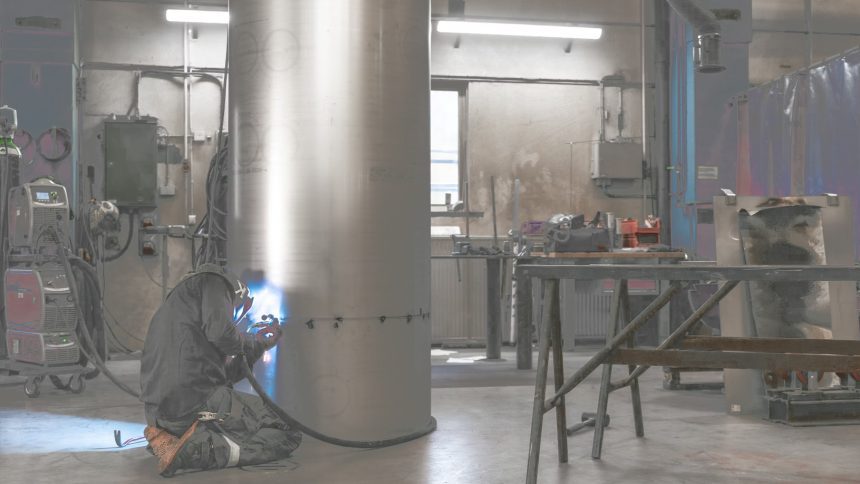Aluminum, an extraordinary and unparalleled metal, boasts a myriad of advantageous attributes that render it a prime choice for diverse projects. Given its exceptional properties, the practice of Tungsten Inert Gas (TIG) welding on aluminum is not an uncommon occurrence.
Aluminum is a difficult material to weld. Here is a guide covering all the major aspects of TIG welding on aluminum.
Welding Town
Steps for TIG Welds on Aluminum
Vital Steps for Proper Material Preparation and TIG Welding
Material preparation is a crucial aspect of ensuring successful TIG welding, especially when working with aluminum. Proper cleaning and machine setup are essential for achieving high-quality welds. Here are the important steps to follow:
Cleaning the Aluminum Surface:
Eliminate contaminants and oils from the aluminum surface before brushing to prevent pushing contaminants into the material.
Brush the material’s surface with a stainless steel brush to remove aluminum oxides.
Machine Preparation:
Set the welding machine to the desired settings, preferably using alternating current (AC) for aluminum welds.
If you prefer using a foot pedal, set the machine to higher current than needed, and adjust the amps with the pedal for precise control during welding.
Use a pure tungsten electrode for better purity and durability, avoiding sharpening the electrode to prevent breaking during welding.
Utilize pure argon gas as the shielding gas for optimal weld purity and performance in aluminum welding.
The Welding Process:
Prepare a checklist to ensure all essential steps are followed before starting the weld.
Check the surroundings to ensure there’s nothing that could catch fire during welding.
Set the amperage and make sure the machine is set to AC or Alternating Current.
Check the coolant level in the machine.
Ensure tight connections on hoses and the TIG torch cable.
Examine the electrode for proper condition and stick out level.
Open the shielding gas bottle’s valve and set the flow rate on the regulator.
Turn on and adjust the auto-darkening welding helmet.
Wear the necessary Personal Protective Equipment (PPE) including safety glasses, hearing protection, steel toe boots, automatic darkening welding helmet, welding gloves, and flame-retardant attire.
While welding, avoid allowing the electrode to touch the base metal or weld pool.
PPE for TIG Welding Aluminum:
For TIG welding aluminum, prioritize the following PPE:
Safety glasses
Automatic darkening welding helmet
Welding gloves.
Ensuring proper material preparation, machine setup, and adherence to safety practices are vital for achieving safe and successful TIG welding results on aluminum. Keeping a checklist and using the appropriate PPE enhances efficiency and safeguards welders during the welding process.
How to TIG Welding On Aluminum Pipe is Done
Tips for TIG Welding Aluminum Pipe
TIG welding aluminum pipe is a common practice in various industries experiencing significant job growth. Achieving high-quality results requires proper technique and execution. Here are some valuable tips for TIG welding aluminum pipe:
Walking the Cup: When welding around an aluminum pipe for a root pass, consider using the “walk the cup” technique. This involves moving the electrode and utilizing the TIG cup to provide extra stability during welding. This technique results in a clean and uniform weld.
Backward and Forward Motions: Employ efficient backward and forward motions while walking the cup with the electrode during a root pass on an aluminum pipe. This helps achieve deeper penetration into the metal. The forward motion assists the filler metal in going deeper into the weld joint, while the backward motion provides additional heat to aid in settling the weld.
Optimal Heat Settings: While it’s essential to run the TIG welder hot enough for strong fusion with aluminum, avoid running it too hot to prevent metal distortion. Running too cold can lead to weak welds, so finding the right balance of heat is crucial.
Consistency in Heat Settings: If you are using hot amperage for the root pass, maintain the same settings for the subsequent hot pass. Avoid excessively increasing the heat, as it can lead to weld defects.
Weaving the Welds: When adding extra passes along the aluminum pipe, consider weaving the welds, similar to other weld joints. You can utilize a cursive or side-to-side arc technique to achieve a well-blended and structurally sound weld.
By implementing these tips and mastering the techniques, welders can achieve superior TIG welds on aluminum pipes, ensuring strong and reliable weld joints for various industrial applications. Proper execution and attention to heat settings play a pivotal role in achieving consistent and high-quality results.










